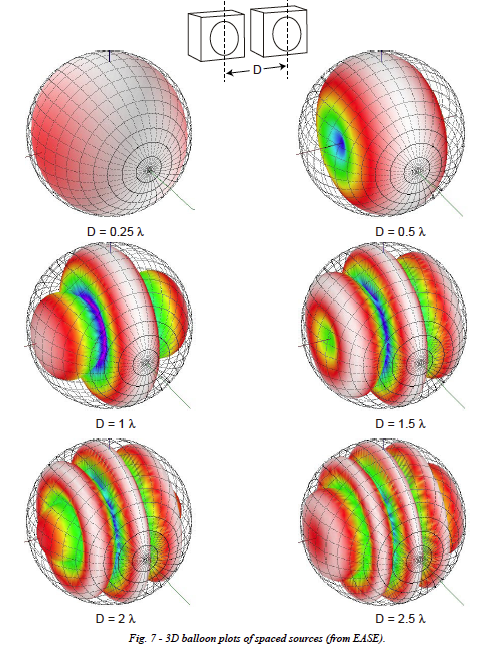Time or Frequency?
Dale Shirk will help us get a better understanding of time and frequency and how they will affect our decisions as audio practitioners.
Much of what we do in audio and acoustics has both time and frequency connotations. While the mathematician will argue that time and frequency are really two views of the same phenomenon, yet in the field we must decide which view we will look at and which view tells us what we need to know.
What are the important criteria in the time view of the audio world? While many of us may have trained our ears to hear very small time increments, the public generally does not become aware of an echo until the time difference between two sound sources, or a source and it’s reflection, is on the order of 30-50 milliseconds. This is assuming similar levels and no intermediate arrivals in between. See Figure 1.
What are the important criteria in the frequency view of the world? Over much of the frequency range of our hearing, the critical bandwidth of the ear is about 1/3-octave. Frequency anomalies significantly smaller than 1/3-octave tend to get smoothed out by the ear. Frequency anomalies larger than 1/3-octave are more likely audible.
Look at Figure 4. The red curve shows a fairly flat frequency response, and might assume that this represents a nice sounding system. But it is actually the same measurement as the white curve. A 1/3-octave smoothing filter was applied to the first version. So are these narrow comb-filters audible to the ear? Not in the frequency domain. But look at Figure 5, the time view of the same thing. It’s actually a slap echo, simulated with a digital delay. Is it audible? You bet.
Now look at Figure 3. This looks innocent enough. A direct arrival followed by a short reflection 3 milliseconds later. One might argue that such a short time interval is not audible as a reflection, and that is correct. But it is very audible in the frequency domain, as shown in Figure 2. Even the smoothed curve shown in red shows a huge dip in the frequency response at 160 Hz, plus additional audible dips at higher frequencies. Consider the effect this might have on vocal and speech fundamentals.
So while our analyzers can examine both time and frequency in great detail, we need to wisely choose which view will show us what we want to know. In general if the sound paths in question are large, we need to look at time. The wall 50 feet away may well have a significant acoustic effect, but it will be perceived, and should be measured, in the time domain. If the sound paths are small, we need to look at frequency. The wall 2 feet away may well have a significant acoustic effect, but it will be perceived, and should be measured, in the frequency domain.
At what point does this transition take place? It depends on the relationship between the wavelength and the physical dimensions involved. When looking at any multiple source issue, be it multiple loudspeakers or a source and a reflection, I divide it into 3 regions based on the ratio of wavelength to physical dimensions.
When the physical dimensions are less than 1/4 wavelength, the sources will combine nicely, without harmful interference. The time viewpoint is meaningless here, only frequency matters.
When the physical dimensions are greater than 4 or 5 wavelengths, any harmful effects will be seen in the time domain. Yes there will be comb-filters, but they will be closely spaced, and not audible in the frequency domain.
In between these two conditions, where wavelength becomes comparable to the physical dimensions, is where all the problems lie. Measurement becomes difficult as we are dealing with the region of time/frequency uncertainty. Perhaps most important is the fact that in this region the effects will vary greatly over space. As you move around there will be lobes and nulls. To completely understand the effects you need to visualize or model it in 2 or 3 dimensional space. A little time spent with a spacial modeling program such as EASE™, ArrayShow™, or others can help illustrate the phenomenon (Figures 6 and 7).
A single pair of speakers, or a speaker and a reflection, can encompass all three conditions if it covers a broad frequency range. In practice it can be difficult to avoid the problem region, but there are things you can do if you are aware of it. For instance don’t place a subwoofer 10 feet away from a wall – that’s in the problem region. Better to slide it tight against the wall, and keep the wall reflection under 1/4 wavelength.
Another practical application is the commonly encountered problem when a loudspeaker is hung 2-3 feet below a ceiling. This results in the 3 millisecond reflection discussed earlier. Better to hang it 6-8 feet down – if space and coverage allow – or hang it tight to the ceiling. If doing the latter, the problem frequencies will be higher, where horn directivity can help reduce the reflection and/or a small patch of sound absorbing material can be placed on the ceiling to absorb it.
One more thing. All of the above applies to multiple sound arrivals at similar levels. If the reflection or second arrival can be reduced to 10 dB less than the first, then frequency response anomalies will be under 1 dB.
When looking at acoustic and audio issues, one must always keep the physical length of the wave in mind. I’ll often ask myself, “How does this affect a 10 ft. wave?; a 1 ft. wave?; a 1 inch wave?” The physical dimensions involved suggest what frequencies may be most effected. ds



